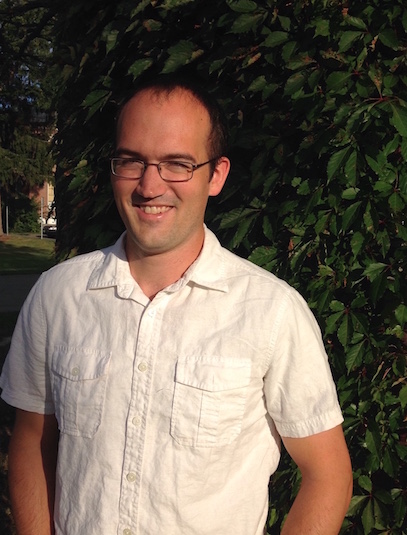Sam Roy
Research Interests:
- Dynamic socio-ecological systems
- Machine learning
- Biophysical modeling
- Stakeholder engagement
- Team science leadership
- Decision support tools
- Morphotectonics
- Geohazards
Research Projects:
- Developing and Deploying a Risk Framework for PFAS Management in Rural America
- Assessing the Value of Access to Water-Related Data to Support River Basin Management
- Future of Dams (New England Sustainability Consortium)
- Upgrading Culverts for Safer Roads and Healthier Ecosystems
Resources:
- News Article 5/6/2019: Dr. Roy Goes to Washington
- News Article: Rising to the Surface for Sustainability Solutions
- 2019 MSWC Presentation: A data-driven approach to planning river barrier decisions in the Penobscot River, Maine
Degrees/Education:
- Postdoctoral fellow, Senator George J. Mitchell Center for Sustainability Solutions, University of Maine
- Ph.D., Geodynamics, University of Maine
- M.S., Earth Sciences, University of Maine/Southern Illinois University at Carbondale
- B.S., Earth Sciences, University of Maine
Profile:
Sam Roy has expertise in dynamic socio-ecological systems, machine learning, biophysical modeling, stakeholder engagement, team science leadership, and student training and mentorship. His past sustainability research projects included: the Future of Dams and a partnership with the Department of Energy to develop decision support tools for multi-objective management of US dams; a USGS/WRRI-funded project for development of computer-based tools to improve ecological and transportation safety management of tens of thousands of culverts underlying Maine’s vast road network amid changing climate and land use; and a coastal water quality project to identify potential policy change geared towards regulation of wild caught and aquaculture shellfish harvests. With colleagues in the School of Earth and Climate Sciences, Roy also collaborated on research to generate a first-of-its-kind global model of bedrock strength and near-surface stress to make spatially-explicit predictions of landslide susceptibility via the integration of geostatistics, physics-based models, and deep learning algorithms.
Selected Publications:
S.G. Roy, S.P. Souza, B. McGreavy, C.G. Druschke, D. Hart, K. Gardner, “Evaluating core competencies and learning outcomes for training the next generation of sustainability researchers”, Sustainability Science, (2019).
Roy, S. G., Uchida, E., de Souza, S. P., Blachly, B., Fox, E., Gardner, K., … Hart, D. (2018). A multiscale approach to balance trade-offs among dam infrastructure, river restoration, and cost. Proceedings of the National Academy of Sciences, 115(47), 12069–12074. doi:10.1073/pnas.1807437115
Song, C., Omalley, A., Roy, S. G., Barber, B. L., Zydlewski, J., & Mo, W. (2019). Managing dams for energy and fish tradeoffs: What does a win-win solution take? Science of The Total Environment, 669, 833–843. doi:10.1016/j.scitotenv.2019.03.042
P. Upton, P. Koons, S.G. Roy, \Rock failure and erosion of a fault damage zone as a function of rock properties: Alpine Fault at Waikukupa River”, New Zealand Journal of Geology and Geophysics 3, 367-375 (2018).
S.G. Roy, D. Craw, P. Upton, \Gold in the hills: patterns of placer gold accumulation under dynamic tectonic and climatic conditions”, Mineralium Deposita 53.7, 981-995 (2018).

